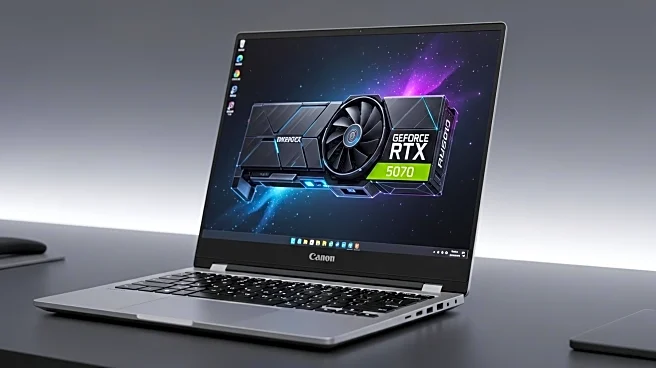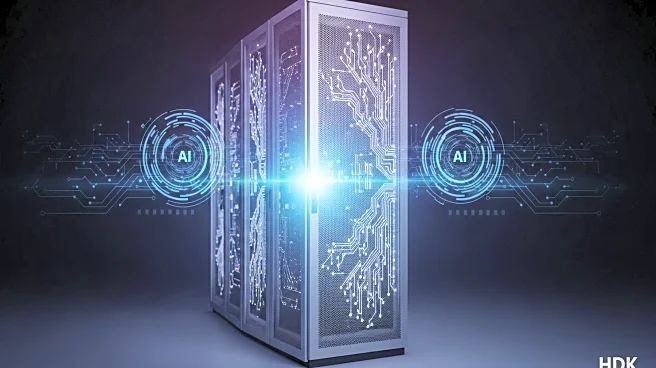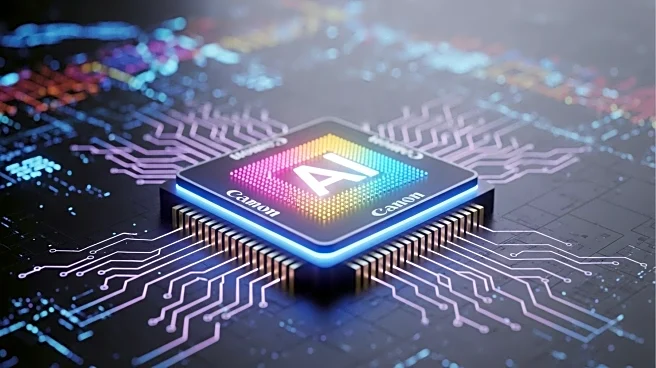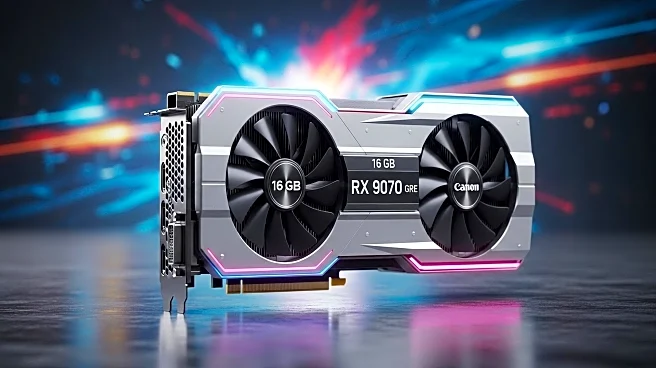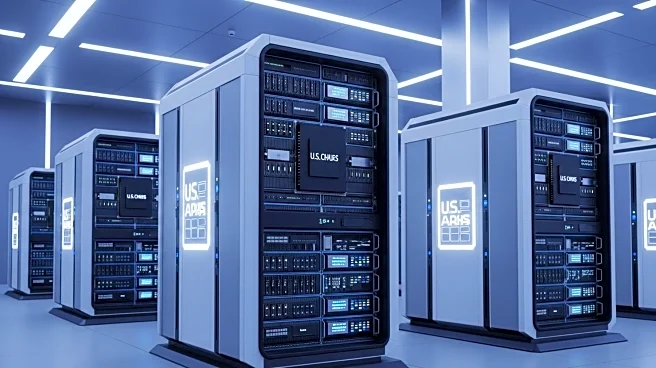What is the story about?
What's Happening?
Omdia, a market research firm, has projected that the AI chip market will reach $286 billion by 2030. This growth is driven by the increasing adoption of AI applications and broader access to fine-tuning and reasoning models. However, the report indicates that the rapid expansion seen between 2022 and 2024 is beginning to slow. AI infrastructure demand led to a significant upward revision, with $123 billion in GPUs and AI accelerators shipped in 2024, expected to rise to $207 billion in 2025. Despite this growth, the year-on-year increase is anticipated to slow to about 67% from 2024 to 2025. Omdia forecasts that AI infrastructure spending will peak as a share of total data center investment in 2026, before gradually tapering off towards the end of the decade. The report also highlights increased competition in the market, with alternatives to Nvidia's GPUs gaining traction, including custom ASICs and AMD GPUs.
Why It's Important?
The projected growth of the AI chip market underscores the significant role AI is playing in transforming industries and driving technological advancements. The anticipated slowdown in growth, however, suggests a maturing market where efficiency gains and specialized models are beginning to curb demand. This shift could impact major tech companies and data centers, influencing investment strategies and competitive dynamics. Companies like Nvidia, which currently dominate the market, may face increased competition from emerging players offering alternative solutions. The broader implications for the tech industry include potential shifts in market leadership and innovation focus, as well as the need for companies to adapt to changing demand patterns.
What's Next?
As the AI chip market evolves, stakeholders can expect increased competition and innovation in chip design and efficiency. Companies may invest in developing more specialized and efficient models to meet the changing demands. The anticipated peak in AI infrastructure spending by 2026 suggests that companies will need to strategically plan their investments to capitalize on the growth opportunities while preparing for a potential tapering off. Additionally, the rise of alternative GPU solutions could lead to strategic partnerships and collaborations as companies seek to diversify their offerings and maintain competitive advantages.
Beyond the Headlines
The slowing growth in the AI chip market may prompt discussions on the sustainability of current AI infrastructure investments and the environmental impact of large-scale data centers. As efficiency becomes a key focus, there could be increased emphasis on developing energy-efficient technologies and reducing the carbon footprint of AI operations. This shift may also influence regulatory policies and industry standards, as stakeholders seek to balance technological advancement with environmental responsibility.
AI Generated Content
Do you find this article useful?


